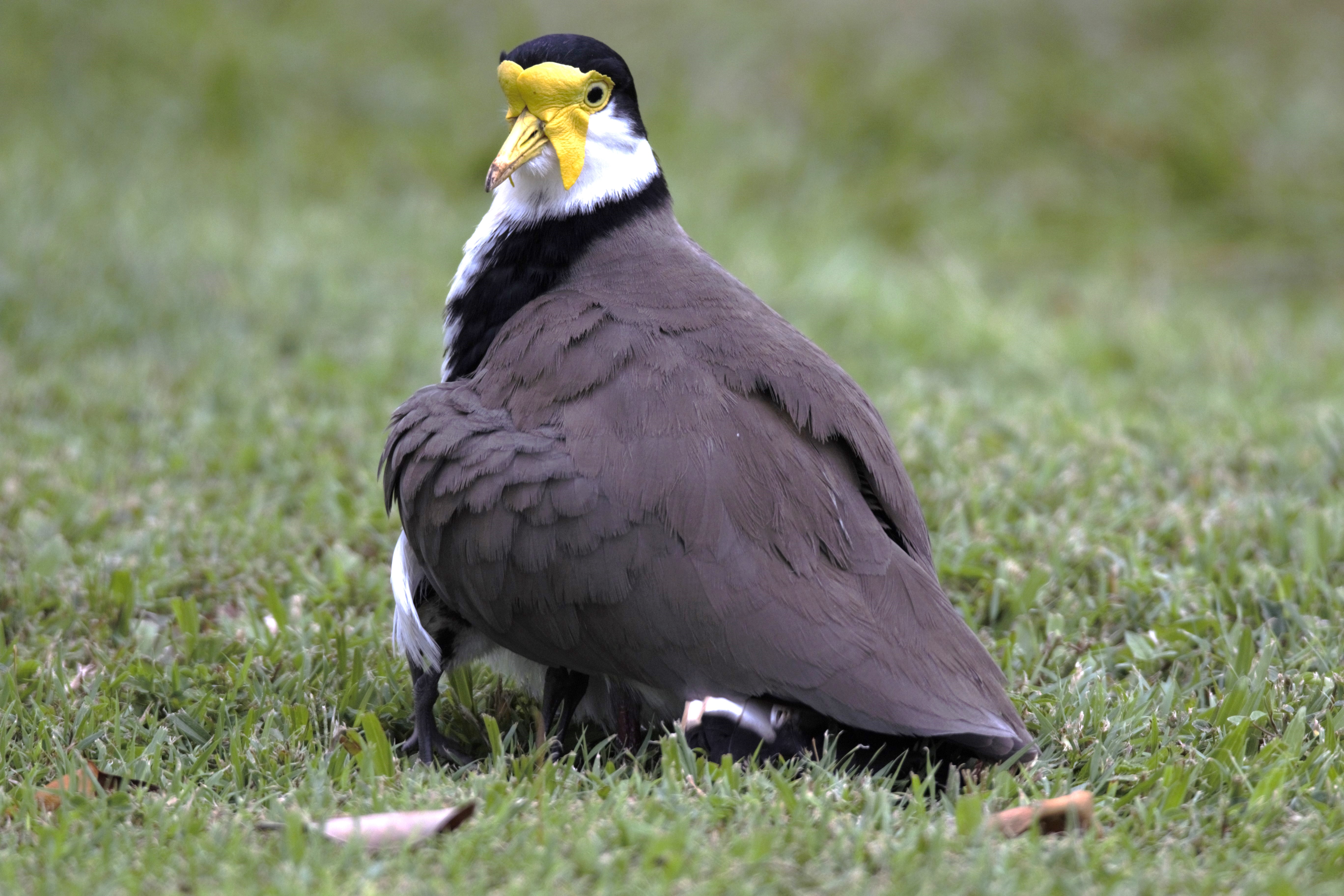Masked Lapwing or plover


If you have a swooping plover in your neighbourhood or school, use the Plover Territory sign to warn others.
Common name: masked lapwing
Scientific name: Vanellus miles
Family: Charadriidae
Conservation status: The masked lapwing is listed as Least Concern in Queensland (Nature Conservation Act 1992).
Description
The masked lapwing is a medium-sized shorebird with a brown back and wings. The crown and back of the neck are black and the underparts are white. It has long red legs and yellow bill with a bright yellow wattles on the face and forehead and a small spur on the edge of their wing. There are two subspecies of masked lapwing, V. m. miles in tropical north Queensland, which has large wattles around the face and V. m. novaehollandiae in the south which has a smaller wattle on the face and the black on the neck extends down the sides of the breast.
Habitat and distribution
Masked lapwings are found throughout Australia except for Western Australia. They are most often seen in open grassy areas close to water. It's not uncommon to see masked lapwings in parks, playing fields or on grassed lawns. In the autumn and winter, lapwings will congregate into small flocks around water bodies, where they feed mainly on seeds, molluscs, worms and insects. Come the breeding season, they split into pairs to nest and breed from late spring. Together they guard their nest (a depression or mound on the ground) and then their chicks, aggressively fending off potential attackers.
Listen
Listen to an audio clip of the masked lapwing.
† Requires an appropriate media player


